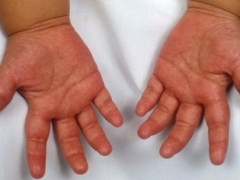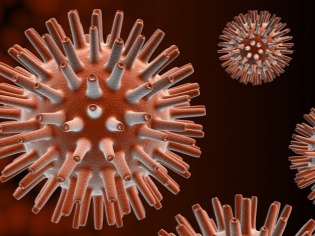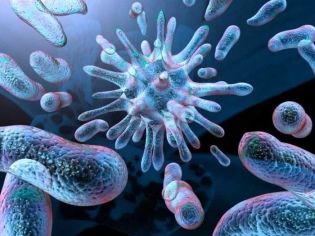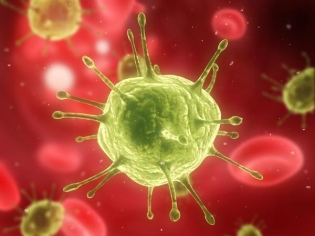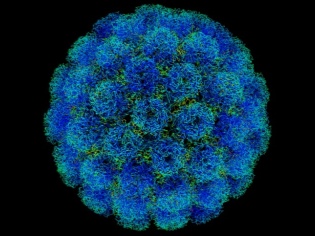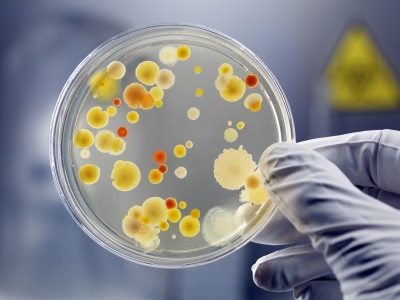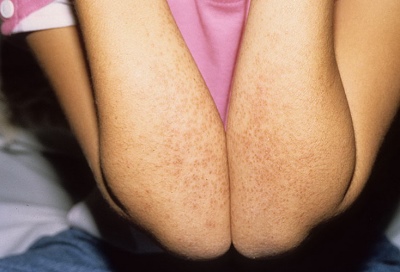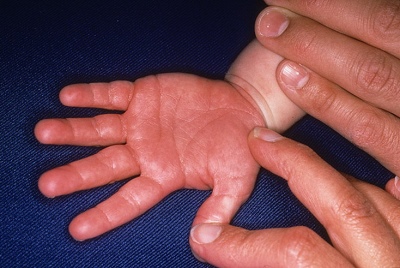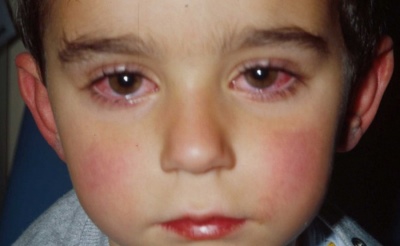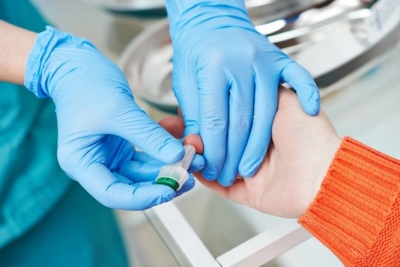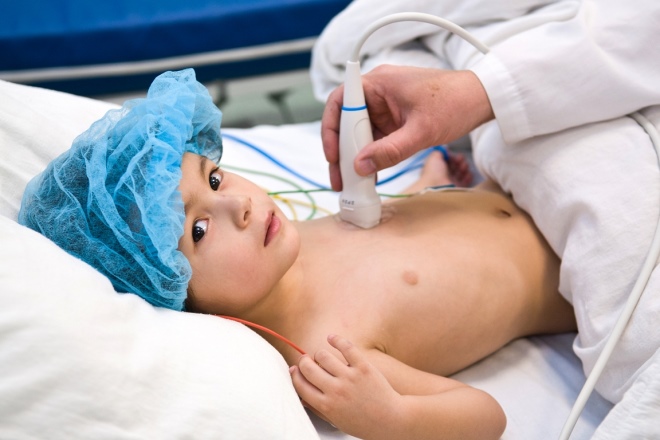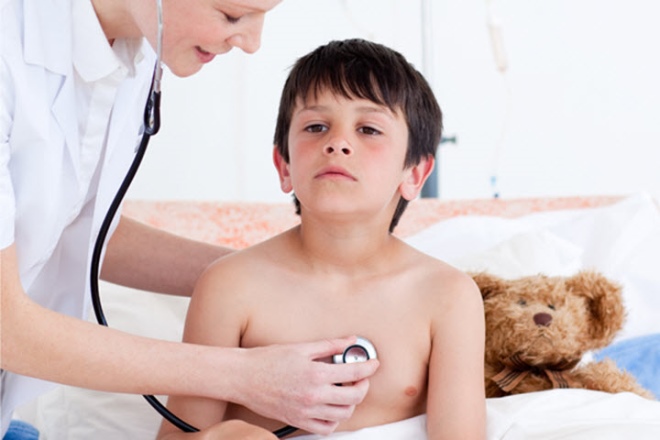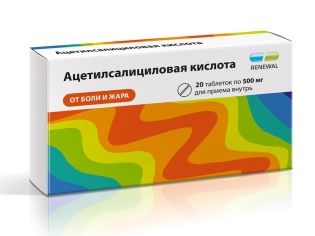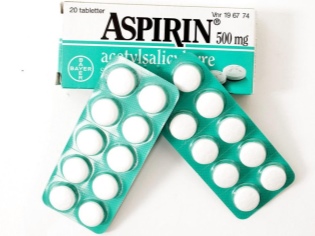Kawasaki disease in children
Diseases in which inflammatory changes occur in the blood vessels and develop hemorrhagic vasculitis, enough. They have a rather severe course and are diagnosed rather late.
The reasons
For the first time this syndrome was established in Japan in the 60s of the XX century. The name of the disease was given by the Japanese doctor Kawasaki. He observed and treated children who had the same symptoms for a long time. At this time, the name of this disease has not yet been established.
After presenting the results of his research at a scientific medical conference, the disease acquired its own name - Kawasaki disease.
According to statistics, this disease affects boys more. They are sick mostly 1.5-2 times more often than girls.
Also noted are population differences. The inhabitants of Asian countries, the incidence of many times higher than in Europe. Scientists have not yet found a scientific justification for this fact.
The peak incidence occurs in early childhood. Usually, Kawasaki disease is more often recorded in children younger than 6-7 years old.
There are also individual cases of the disease and at an older age. In Japan and America, there is evidence of the detection of this disease in 25-30 years. In some cases, the disease is also found in infants and newborns.
It was not possible to establish a single cause of the disease. Currently, there are continuing numerous global studies aimed at establishing the source of the disease in babies.
Most scientists agree that the cause of the disease are various viruses. The most likely include: herpes viruses, retro-and parvoviruses, adeno-and cytomegalovirus, and other reasons.
A number of studies emphasize that various bacterial infections can lead to the development of Kawasaki disease. Scientists have discovered that after streptococcal, staphylococcal and meningococcal infections, babies become ill with this disease several times more often.
In some countries, there have been cases of Kawasaki disease after being bitten by various ticks.
Borrelia or rickettsia, which enter the blood during tick-borne infections, contribute to the development of inflammatory processes in the blood vessels. These parasites can cause the development of autoimmune reactions in babies, which lead to the development of hemorrhagic vasculitis.
For this disease is characterized by seasonality. The greatest number of cases of exacerbations of the disease are registered in March-April, as well as at the end of the year - December. Such seasonality has prompted experts to believe that the disease is infectious.
How is it developing?
For the development of the disease is characterized by the formation of a large number of T-lymphocytes. Normally, these immune cells help to eliminate various pathogens from the body.
When microbes enter, a strong immune cascade of reactions is launched. During this process, a large number of different cytokines are produced. These substances have an inflammatory effect.
Once in the inner walls of the blood vessels, proinflammatory cytokines cause severe inflammation in them. As the inflammatory process develops, all layers of arteries and veins are damaged in layers.
As a result of such damage to the walls of blood vessels begin to exfoliate and thin. Ultimately, this leads to the appearance of pathological extensions - aneurysms.
The danger of these tumors is that they are very fragile and can easily rupture.Any drop in blood pressure can cause aneurysm rupture and lead to internal bleeding.
Coronary vessels are most susceptible to this disease. They are created by nature to supply blood to the heart muscle. In case of any damage to the coronary vessels, death of the heart tissue may occur - necrosis, leading to a heart attack.
After some time, fibroblasts begin to penetrate the walls of the inflamed vessels. These cells are able to trigger the formation of connective tissue in the body.
With an excess amount, they contribute to the formation of too dense vessels that can not fully narrow and expand.
Symptoms
Kawasaki disease is characterized by several specific symptoms. Diagnosis of the disease is mainly based on the detection of these clinical signs.
The appearance of only one symptom is not diagnostically significant. To establish the diagnosis will require the detection of at least 4 signs.
The most specific symptoms include:
- The appearance of loose elements on the body. Virtually the entire body, including the extremities and even the groin area, is covered with a rash. It reminds outwardly measly. Elements can be so numerous that the skin becomes a uniform red, "glowing" color. In some cases, the rash appears only on the legs.
- Redness of the palms and feet. They become bright crimson. As the disease progresses, the skin begins to peel off and reject. On the nails you can see the numerous grooves and grooves.
- Changes in the oropharynx and pharynx. The oral cavity becomes bright red or even crimson. The tongue can form pimples and various inflammations. Lips are cracking. Crusts appear on the red border of the mouth and mucous membranes.
- Conjunctivitis development. Sclera become injected. Increased tearing and photophobia. Eyes redden strongly. In some cases, there is swelling of the eyelids. Often, babies try to stay in dimly lit rooms, as this brings them a pronounced improvement in their well-being.
- Enlarged cervical lymph nodes. They become compacted, soldered to the skin. Usually, the lymph nodes increase from 1.5 to 2 cm. In severe cases, they can be seen even from the side.
The whole course of the disease takes place in its development several successive stages:
- Acute fever. Usually develops in the first 7-10 days after the onset of the disease. Accompanied by the appearance of high fever - more than 39-40 degrees. It is difficult to reduce, even despite the use of antipyretics. Conjunctivitis appears at the end of this period, as well as specific changes in the oral cavity and on the skin.
- Subacute period. Lasts about 6 weeks. It is characterized by normalization of body temperature and the appearance of the first aneurysms in the blood vessels. Accompanied by persistent skin manifestations. If during this period the body temperature rises sharply again, then this can be a very unpleasant harbinger of a new relapse of the disease.
- The recovery period. Gradually pass all adverse symptoms. The latest visible changes are only the transverse stripes on the nails. Emerging aneurysm of the blood vessels gradually pass. This happens only with timely prescribed interferon therapy.
- If the disease was detected rather late, which led to the development of complications in the child, then the talk is about the transition of the disease to the chronic form. It is accompanied by the development of long-term adverse effects. Such children require constant monitoring by an infectious disease specialist and a cardiologist.
Diagnostics
Since life-threatening complications can occur in Kawasaki disease, the doctors concluded that the diagnosis was the simplest and fastest.
The way out of the situation was the American classification, which makes it possible to suspect the disease at an early stage. To do this, do not need special tests and analyzes.
The presence of four of the five clinical symptoms of the disease against a background of fever, which is observed for 5 days, serves as the basis for establishing the presumptive diagnosis of this disease. This rapid method allows you to establish the diagnosis within the first days since the onset of the disease and the appearance of fever.
Laboratory and instrumental methods of diagnosis are in this case auxiliary. Basically, they are needed in order to detect dangerous complications in time.
In order to confirm the diagnosis of Kawasaki disease and identify complications, doctors prescribe:
- General blood analysis. A multiple increase in ESR indicates the presence of autoimmune inflammation. Changes in the leukocyte formula may indicate the presence of a viral or bacterial infection in the body.
- Biochemical research. Excess C-reactive protein indicates the development of systemic immune inflammation. In the entire acute period of the disease, this indicator significantly exceeds the norm. Also increases the level of alpha1 - antitrypsin.
- Echocardiography of the heart. It is carried out several times: at the time of the first diagnosis, 14 days after the onset of the disease and after two months. This sequence allows doctors not to miss the beginning of the development of complications of the disease.
- ECG. Reveals hidden heart rhythm disturbances. In Kawasaki disease, various arrhythmias or tachycardias may develop. It is very easy to detect these changes using an ECG. For children who have had this disease, the heart is examined regularly.
- Radiography of the chest. Gives a description of the anatomical structure of the heart and large vessels. Allows you to identify aneurysms that have arisen in large blood vessels. This method is also used to detect the hidden and long-term effects of the disease.
Possible complications
The disease is usually characterized by a very good prognosis. Most of the sick children recover completely.
Adverse effects of the disease occur only in too weak children or children with severe immunodeficiencies.
The most adverse consequences of the disease include the development of large blood vessel aneurysms, myocardial infarction, the emergence of various cardiac arrhythmias.
Usually, these adverse effects are recorded several years after the illness. To eliminate them, consultation of a cardiologist and the appointment of a complex treatment, which in some cases turns out to be lifelong, is required.
Treatment
To eliminate autoimmune inflammation, intravenous immunoglobulin is administered. This drug reduces the formation of blood vessel aneurysms. With intensive care, body temperature returns to normal. Also inflamed lymph nodes are reduced in size.
Without the use of immunoglobulin therapy often turns out to be ineffective.
The use of acetylsalicylic acid is also an important step in the treatment of the disease. Aspirin helps to eliminate the increased tendency to blood clots that occur during illness.
The use of this drug helps to reduce the risk of myocardial infarction several times. The efficacy of using acetylsalicylic acid has also been found in the elimination of small aneurysms resulting from Kawasaki disease.
Some scientific studies have confirmed the possibility of using hormonal glucocorticosteroids. Scientists say that these funds will help reduce the manifestations of systemic inflammation and improve the blood supply to the heart muscle.
Forecast
Over 90% of Kawasaki disease patients recover.The disease completely stops after a few months.
Only 1% of patients have dangerous complications that are incompatible with life. As a rule, they are accompanied by the strongest necrosis of the heart muscle and the development of a heart attack.
In some cases, the gap develops aneurysm of a large vessel. Failure to provide timely emergency medical care can also be fatal.
Doctors consider the first 2-3 weeks from the onset of high temperature to be the most unfavorable period in the development of the disease. It is during this period that the child needs the most thorough medical supervision and monitoring.
Below you can watch a video about Kawasaki syndrome in children.
